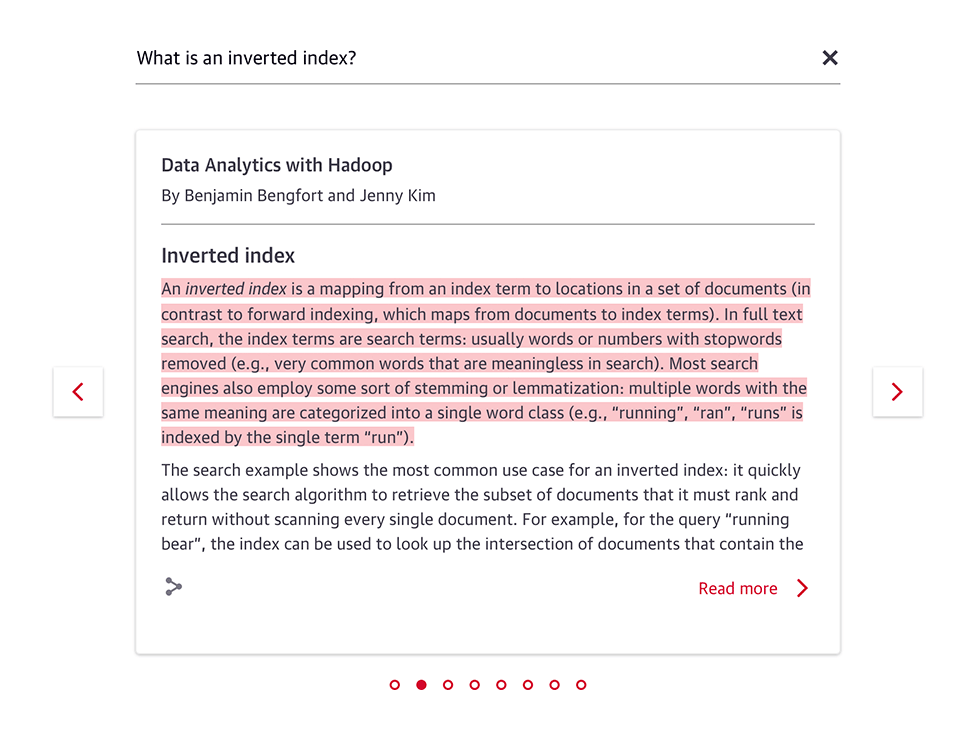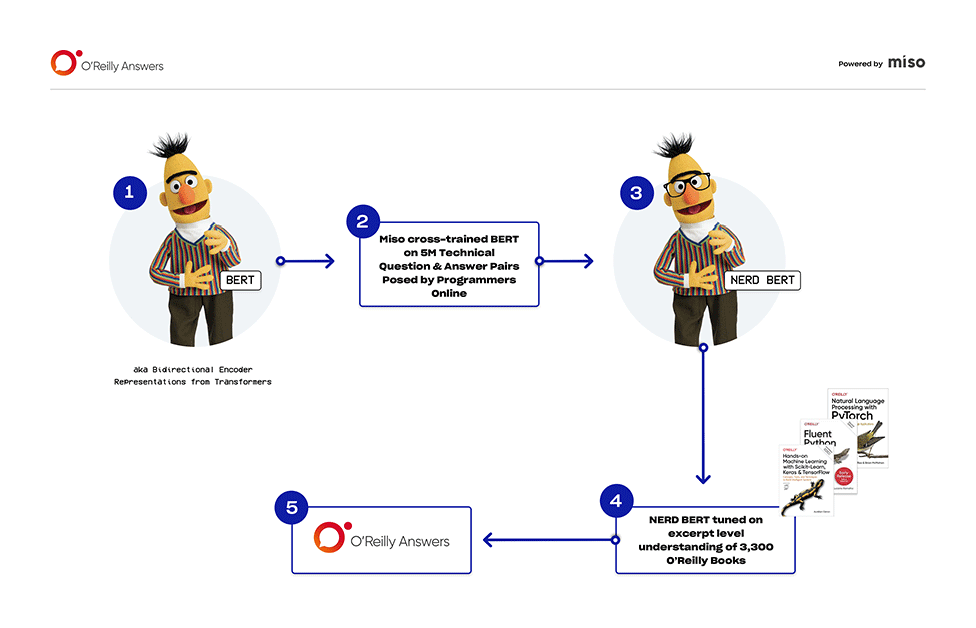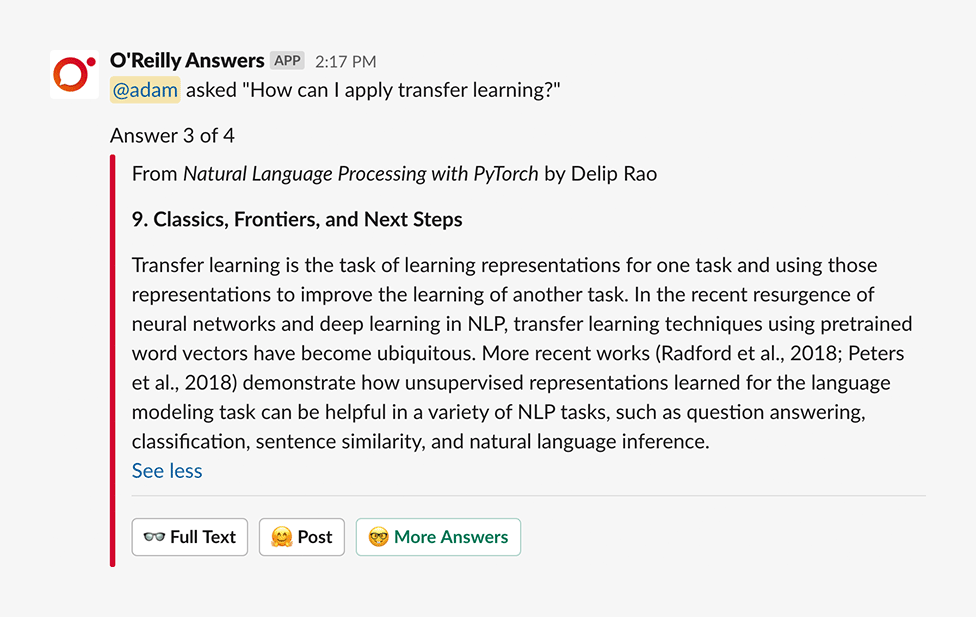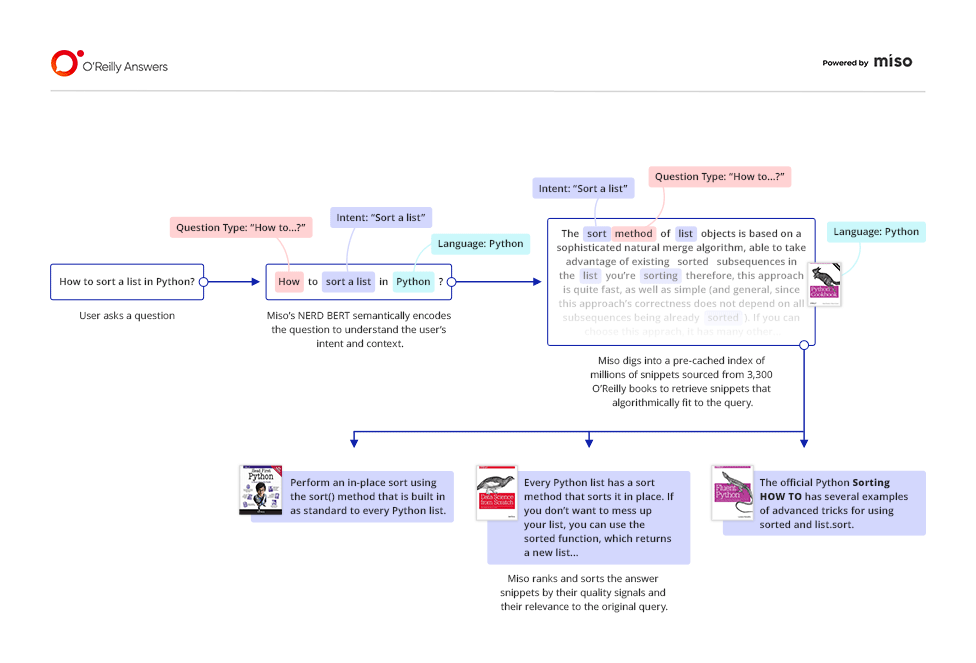Don’t get stuck. Get Answers.
O’Reilly online learning has the best collection of technical content in the world. Whether you’re starting from scratch to learn the fundamentals of a well-established programming language, bringing cloud-based architecture to your organization, or exploring emerging tech, we’ve got you covered.
But it might be possible to have too much of a good thing. The downside of having such a comprehensive offering is that people can quickly become overwhelmed. Without pathways to discover relevant content, you might miss out on the best of what O’Reilly has to offer. Our traditional search interface does a fantastic job at surfacing content by topic, title, or author. But when you have a specific question in mind, searching by metadata and keywords sometimes isn’t enough to find your answer quickly.
That’s why we created O’Reilly Answers. With Answers, you can solve your most pressing technical problems—fast: simply ask a question, and we’ll surface the most relevant excerpts that answer the question, pulling directly from our rich library of content. In doing so, we’re hoping to spare you from having to drill down into a volume of text and scan through dense chapters and paragraphs. Instead, the answer is right there in front of you. O’Reilly Answers is available today on O’Reilly online learning, with an accompanying Slack app already online for our enterprise users.
The technical details
When we began working on O’Reilly Answers, it became clear that the legacy landscape of search platforms couldn’t support the experience we had in mind for our users. Retrieving a book from an inverted index (see image below) isn’t the same as actually analyzing the book’s contents to find an answer—let alone an answer that’s semantically and personally relevant to the user and the question they’re posing. We needed a different approach to this type of information retrieval (IR).

To that end, we’re proud to have partnered with Miso to create an entirely new search engine specifically for our Answers service. At the core of what we’ve built together is Miso’s “Ask Miso Anything,” a question-and-answer semantic search engine. It’s designed to accept questions from users in conversational natural language and retrieve the relevant answer “snippets” from a vast library of textual content.
In a post-BERT world, question-and-answer systems are becoming more commonplace, but what became evident as we prototyped O’Reilly Answers together is that Miso’s approach to Q&A is radically different in a few key ways.

Miso’s machine learning platform uses transfer learning (see image below) to take concepts it understands in one setting and apply them to a new situation, much like the human brain. In this case, Miso was able to cross-train and fine-tune its baseline BERT model on tens of thousands of technical and programming questions posed on forums around the web. So from the outset, concepts like “Python” or “gradient descent” had a robust level of pretrained comprehension and contextual understanding.

Miso then personalized this pre-optimized model for O’Reilly content by training it on our catalog of over 3,300 books. As you can imagine, O’Reilly books, especially our Cookbooks or Pocket References, have a different structure and vastly more text than the standard Wikipedia article or blog post. To get the most value out of the catalog, Miso developed a series of advanced IR optimizations that worked around BERT’s limitations on window size and computational overhead. Miso was also flexible enough to learn how to read the underlying structure of our books. That way, it could break a book down to the sentence level while also retaining the markers that show where these sentences were located in the original text.

The end result is that Miso is able to not only find an answer to a question like “What is gradient descent?” but also take users straight to that answer in an O’Reilly book. Miso can even find multiple answers and rank them by their inferred quality and relevance.
More than just keyword search
O’Reilly Answers rewards members who seek more than just keyword-based search results. In particular, Answers excels at parsing questions and revealing answers buried deep within the O’Reilly content library. (For some examples, take a look at what we call our “question bank” at the bottom of the page.) For those of you who use O’Reilly online learning every day, we intend Answers to be an eminently pragmatic experience, geared toward immediate problem solving (or what some industry experts have called “learning in the flow of work”), while also providing additional context for the original source material should you want to explore the answer to your question more deeply.
For O’Reilly users who are less technically inclined or are no longer in an individual contributor role—for example, those in managerial or leadership positions—Answers can serve as a quick and reliable authority on more basic technical questions like “What are microservices?” or “What kind of roles make up a data science team?” General web search results to questions like these lead to uncertainty—can you trust what you’re seeing? With Answers, you’re searching content that’s been created by O’Reilly authors and experts and curated by our editorial team.
While we’re proud of the Answers experience, we know we have a lot more to do to help make O’Reilly online learning more useful and the content more discoverable to you. With some of the emerging trends in NLU and language transformer technology, we’re on the brink of a revolution in how we as humans interface with text and other forms of content. At O’Reilly, we’ll continue to produce the best technical content available while creating new ways to connect you to it.